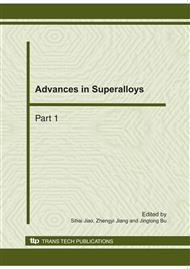p.829
p.834
p.838
p.844
p.848
p.853
p.859
p.865
p.869
Study on the Low-Temperature Resistance of Architectural Membrane Material by the Quadratic General Rotary Unitized Design
Abstract:
The quadratic general rotary unitized design of two factors, the temperature and the time were used to study the influence of low-temperature to architectural membrane material. The tensile properties of architectural membrane material were tested after low-temperature treatment, and the mathematical models about breaking strength and elongation at break were built. The two mathematical models proved highly significant by F test, which indicates that the low-temperature environment has a distinctive influence on breaking strength and elongation at break of architectural membrane material. The results are kept to serve as a reference for the rational utilization of architectural membrane material in low-temperature environments.
Info:
Periodical:
Pages:
848-852
Citation:
Online since:
October 2010
Authors:
Price:
Сopyright:
© 2011 Trans Tech Publications Ltd. All Rights Reserved
Share:
Citation:


